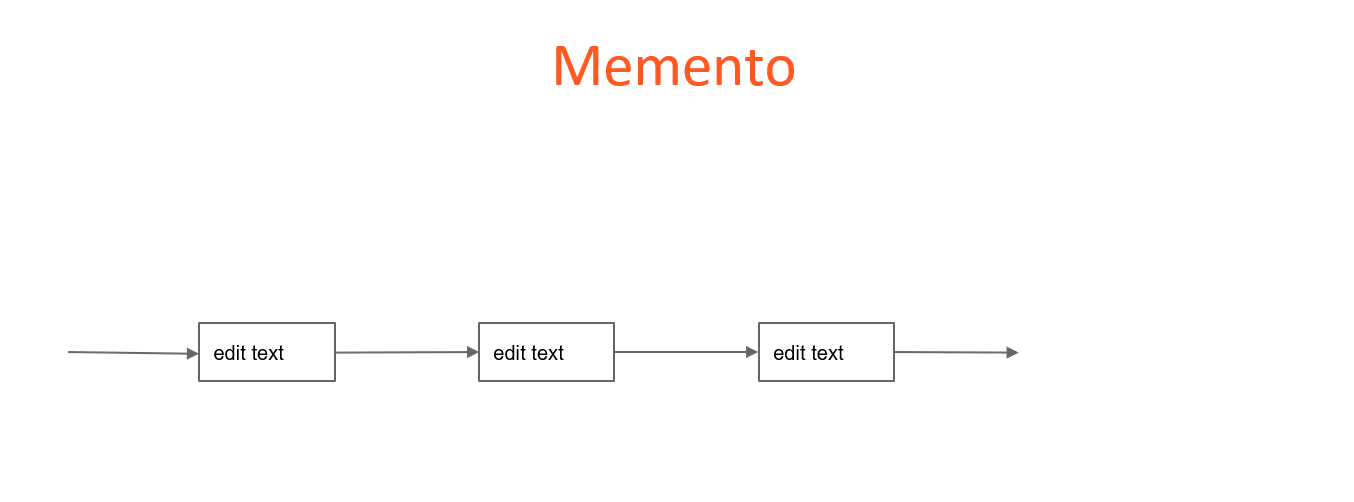In this blog post, we embark on an exploration of the Memento Design Pattern. This pattern is specifically designed to handle undo and redo operations, a feature many software applications rely on. It empowers us to save and restore previous states, enabling smooth navigation through a chain of historical states without revealing implementation details.
Table of contents
Open Table of contents
Sections
An Analogy: The Text Editor
Imagine working with a text editor where you’ve made numerous changes, and at some point, you decide to undo certain operations. This scenario necessitates the ability to revert to a previous state effectively. The Memento Design Pattern comes to the rescue by allowing you to encapsulate each step or state, creating a chain of states that you can move backward and forward within.

Understanding the Memento Design Pattern
At its core, the Memento Design Pattern provides a solution to manage the history of states, whether in a text editor, a drawing application, or any system that requires undo and redo functionality. This pattern comprises three essential components:

Memento:
This object stores a specific state of the system. In our example, it holds a string representing the state.
Originator:
The originator is responsible for creating and restoring mementos. It knows how to save its state within a memento object and how to restore the state from a given memento.
Caretaker:
The caretaker is a utility class that handles mementos. It can save states to mementos and retrieve states from mementos, allowing you to navigate between different points in time.
Putting Theory into Practice
Let’s delve into a practical example of the Memento Design Pattern to illustrate its real-world application. We’ll implement a simplified text editor.
Memento (Memento.java)
The memento stores the state of our text editor.
public class Memento {
public String state;
public Memento(String state) {
this.state = state;
}
}Originator
The originator represents our text editor. It is responsible for creating and restoring mementos.
public class Originator {
String state;
public Originator(String state) {
this.state = state;
}
public Memento createMemento() {
return new Memento(state);
}
public void restoreMemento(Memento memento) {
state = memento.state;
}
}CareTaker
The caretaker manages the mementos and allows us to save and restore states.
public class CareTaker {
ArrayList<Memento> mementoArrayList = new ArrayList<>();
public void saveState(Memento memento) {
mementoArrayList.add(memento);
}
public Memento restoreState(int index) {
return mementoArrayList.get(index);
}
}Client
In our client, which simulates a text editor, we create the originator and caretaker. We then make changes to the text editor’s state, save them to mementos, and demonstrate how to move back and forth between these states.
public class Client {
public static void main(String[] args) {
Originator originator = new Originator("Initial State");
CareTaker careTaker = new CareTaker();
careTaker.saveState(originator.createMemento());
System.out.println("Current state is: " + originator.state);
originator.state = "State One";
careTaker.saveState(originator.createMemento());
System.out.println("Current state is: " + originator.state);
originator.state = "State Two";
careTaker.saveState(originator.createMemento());
System.out.println("Current state is: " + originator.state);
System.out.println("------------------------------------");
originator.restoreMemento(careTaker.restoreState(0));
System.out.println("Current state is: " + originator.state);
}
}In this example, we create and save three states: “Initial state,” “State 1,” and “State 2.” We demonstrate the ability to move back and forth in our system by restoring specific states from the mementos. This flexibility showcases the power of the Memento Design Pattern in managing historical states effectively.
Benefits of the Memento Design Pattern
The Memento Design Pattern brings several advantages to your software architecture:
Undo and Redo Functionality:
It simplifies the implementation of undo and redo operations, making applications more user-friendly.
State Management:
The pattern allows for easy management of an application’s state history, aiding in debugging and error recovery.
Isolation of Concerns:
It separates the responsibility of maintaining state from other application logic, promoting a cleaner and more maintainable codebase.
Conclusion
The Memento Design Pattern offers a practical way to handle undo and redo operations in software applications. By maintaining a chain of states, it enables seamless navigation through time without revealing the implementation details. This pattern is a valuable tool for building user-friendly applications that empower users to correct their actions and explore different paths. We hope this exploration of the Memento Design Pattern has been enlightening and that you now have a deeper understanding of how to manage and navigate states in your software projects. Incorporating this pattern can improve the user experience and enhance the overall usability of your applications.
Happy coding! 🚀